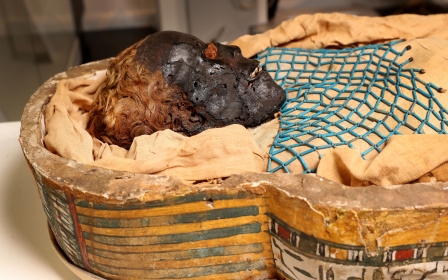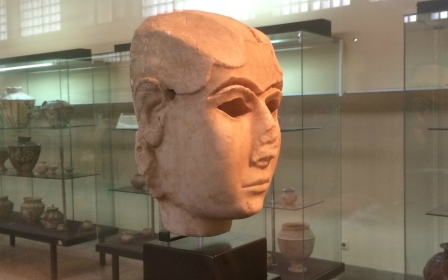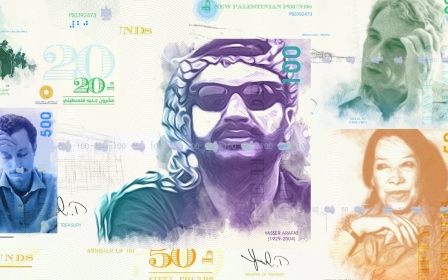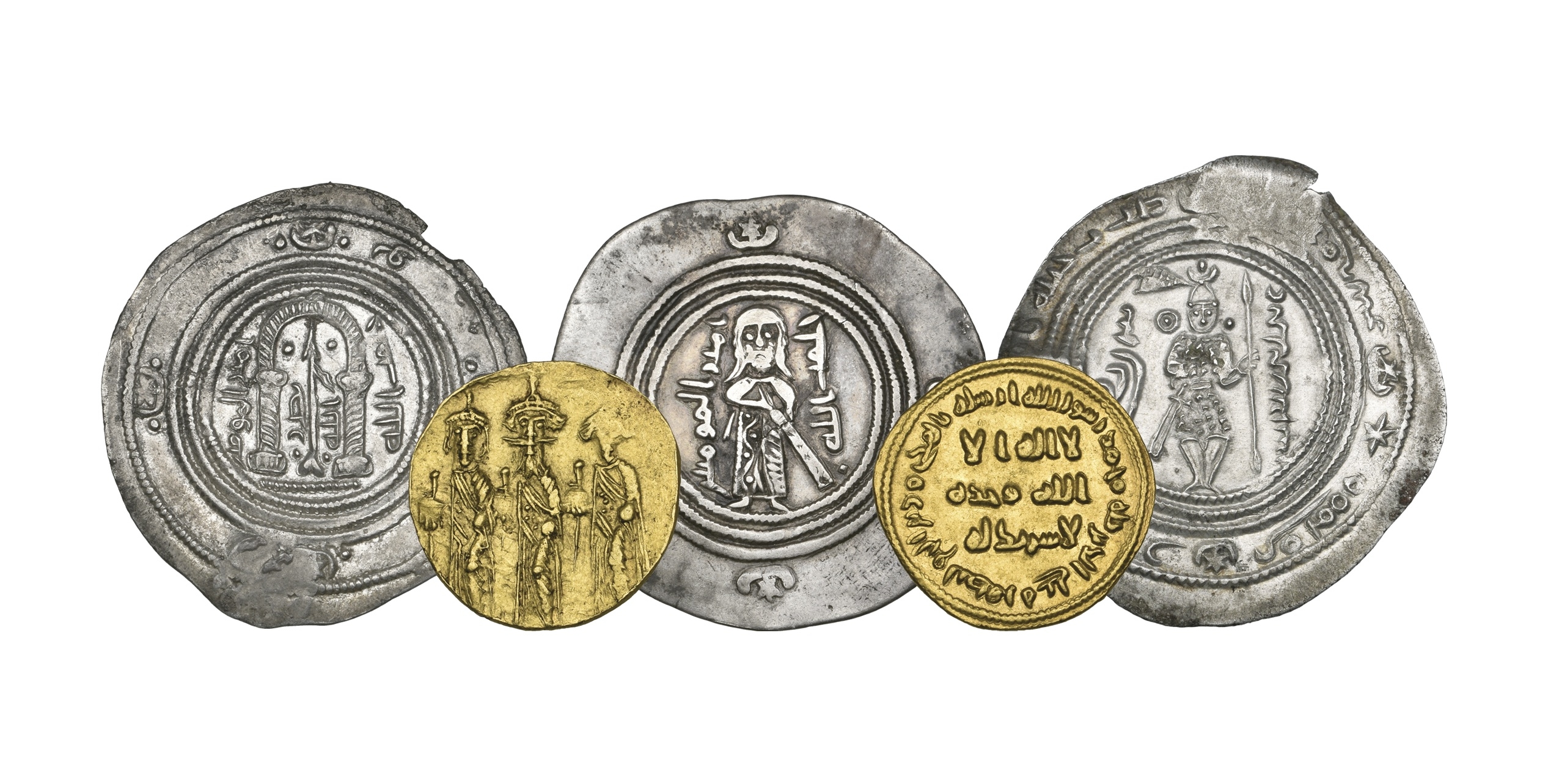
In pictures: Some of the first coins used by Muslims in 7th century Arabia
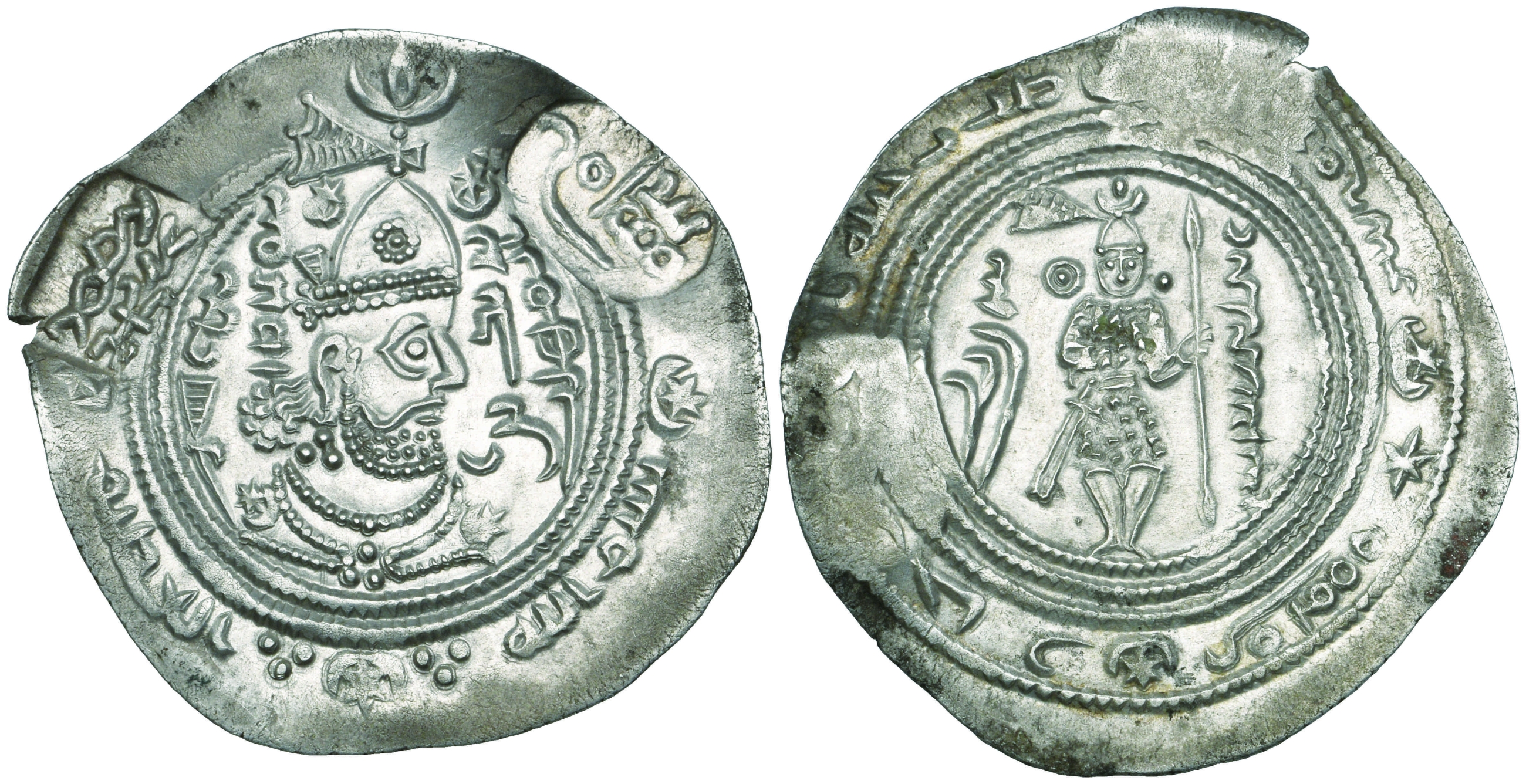
They've survived more than a millennium since they were minted. Five coins from the first century of Islam that show how the new civilisation adapted coinage from existing empires, and then minted their own uniquely Islamic coins. Today they are more valuable than ever - they were expected to collectively fetch $1m at a sale planned for earlier this month by London auction house Morton & Eden, but this has now been postponed because of the coronavirus pandemic. (Photo credit: Morton & Eden)

Before using coins, Arabs operated as a trade-barter society, exchanging food, livestock, as well as spices and rare fragrances such as frankincense and myrrh obtained on their travels. Following the death of Islam's Prophet Muhammad in 632AD, the Islamic empire continued to expand under the Umayyad Caliphate. In 7th century Arabia, existing coins from the defeated Byzantine and Sasanian empires - including modern-day Syria, Jordan, Lebanon and Egypt - would become the first coins used by Muslims. One of the earliest examples of a gold coin shows a "modified cross" solidi, from the 600s - very few of this type have survived. (Credit: Morton & Eden)
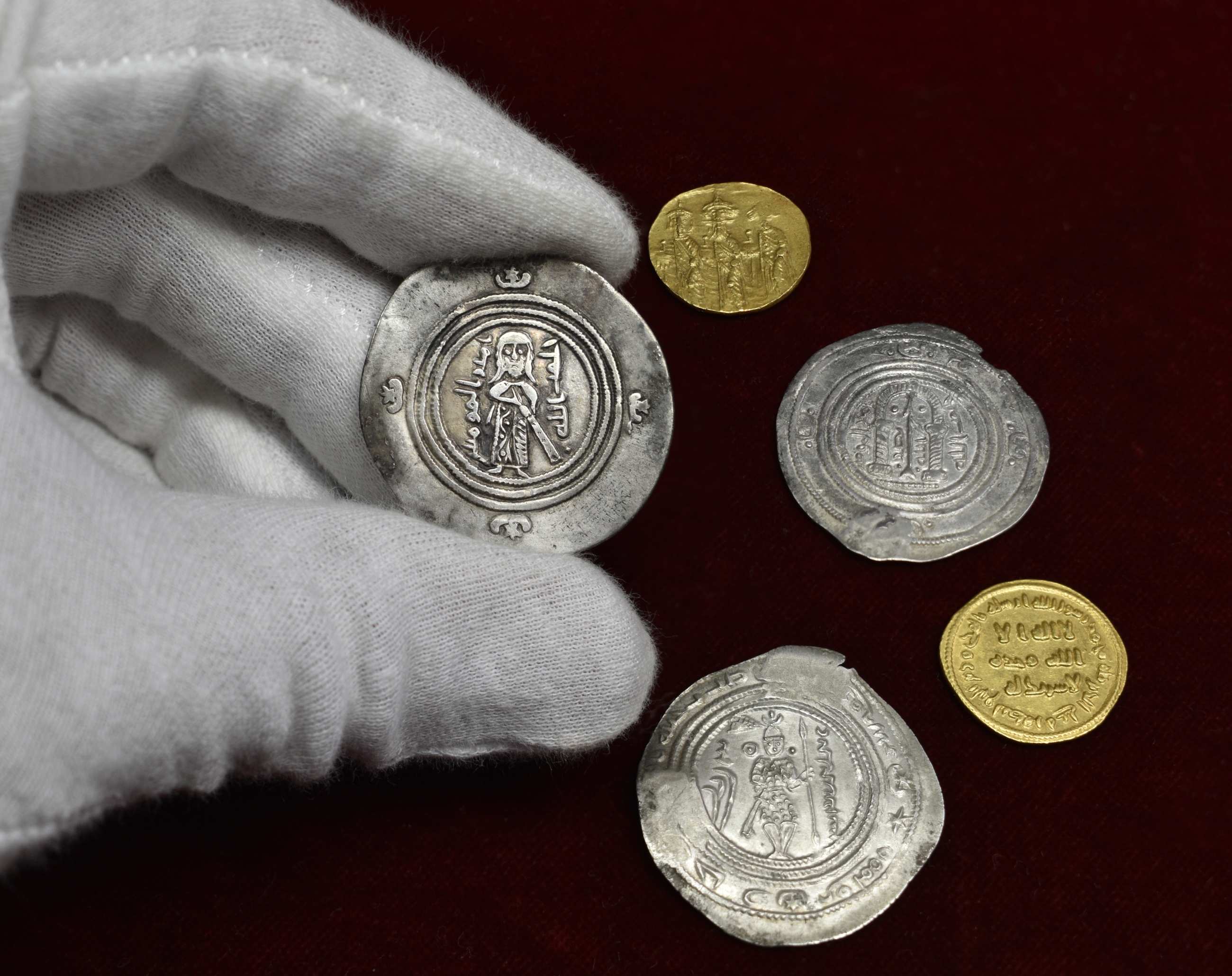
"When it came to striking new gold coins the existing Byzantine prototypes were used but any overt Christian symbolism such as a cross was simply removed,” says Stephen Lloyd, coin specialist at Morton & Eden. “In the early years of the great Muslim conquests there was no existing tradition of coinage so the rulers simply adapted or took inspiration from what coinage was in use for their own purposes." Like this silver Arab-Sasanian coin dubbed the "Standing Caliph", because one side depicts a standing figure of a man holding a sword, thought to be the Ummayad Caliph Abd al-Malik. The popular coin was later struck in gold and copper in Syria, with Damascus serving as the capital of the Caliphate. (Credit: Morton & Eden)

The other side of the "Standing Caliph" shows the crowned bust of the Sasanian King Khosrow II (591-628AD). The coin is similar to existing silver drachms, which were in circulation at the time. By this point in history, the Muslim conquests had extended both east and westwards, uniting both the former Byzantine and Sasanian empires, and their coinage, under one empire. (Credit: Morton & Eden)
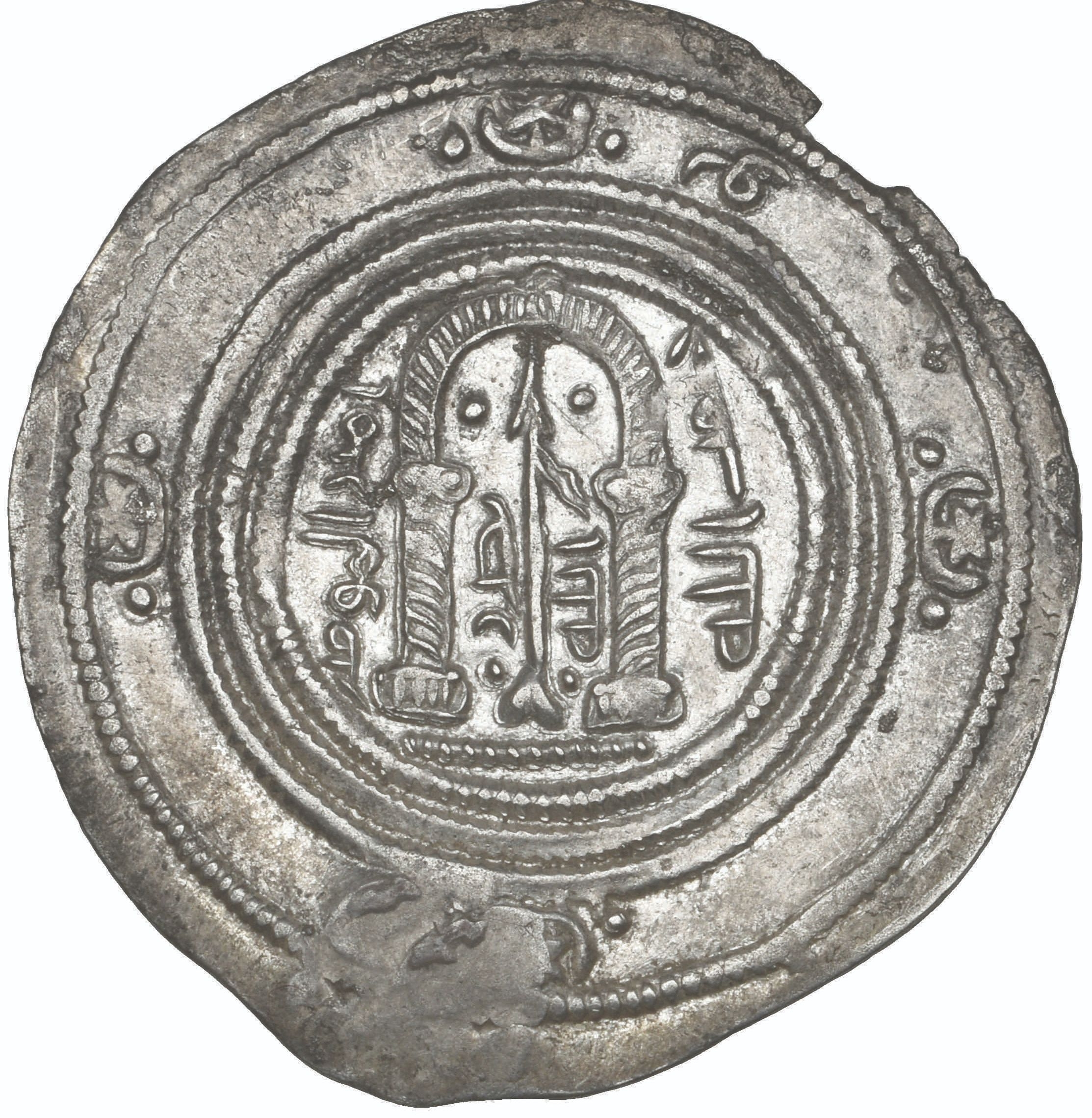
The Mihrab and Anaza drachm gets its name from its unique design. The coin features one of the earliest depictions of a mihrab, or arch, a distinct curved structure often found in Islamic architecture. In the centre is the anaza, or spear, to honour the one said to be carried by Prophet Muhammad. Scholars have also suggested that the coin might have been used as military coinage, since armour is depicted. (Photo credit: Morton & Eden)

"After three decades of varying forms of hybrid coins, in the year 77 H [696AD] the first Umayyad gold dinar was struck, heralding the birth of a new purely Islamic coinage," says Lloyd. These marked a shift in design, showing no imagery as the earlier coins did - just clear and simple quotations from the Quran. In contrast to the Christian doctrine of the Trinity, these coins are engraved with words that emphasise the oneness of God, such as "There is no God but God", in Arabic script.
“Abd al-Malik ibn Marwan’s introduction of a single, unified and distinctive Islamic gold coinage has rightly been seen as a landmark in the early history of Islam. The gold dinar is beautiful in its striking simplicity, and is obviously and uncompromisingly Islamic," says Lloyd. (Photo credit: Morton & Eden)

The new Quranic-inscribed dinar coins became the standard coinage produced under the Ummayad rule. This style of coin was not changed until after the fall of the Caliphate in 749AD, although many of the inscriptions that Caliph Abd al-Malik introduced were also found on the later coins issued under the Abbasid Caliphate nearly six centuries later. Coins from the early Islamic period can still be found throughout the world, including these coins which were owned by private foreign collectors and returned to the Egyptian Supreme Council of Antiquities in 2010. (Credit: AFP)
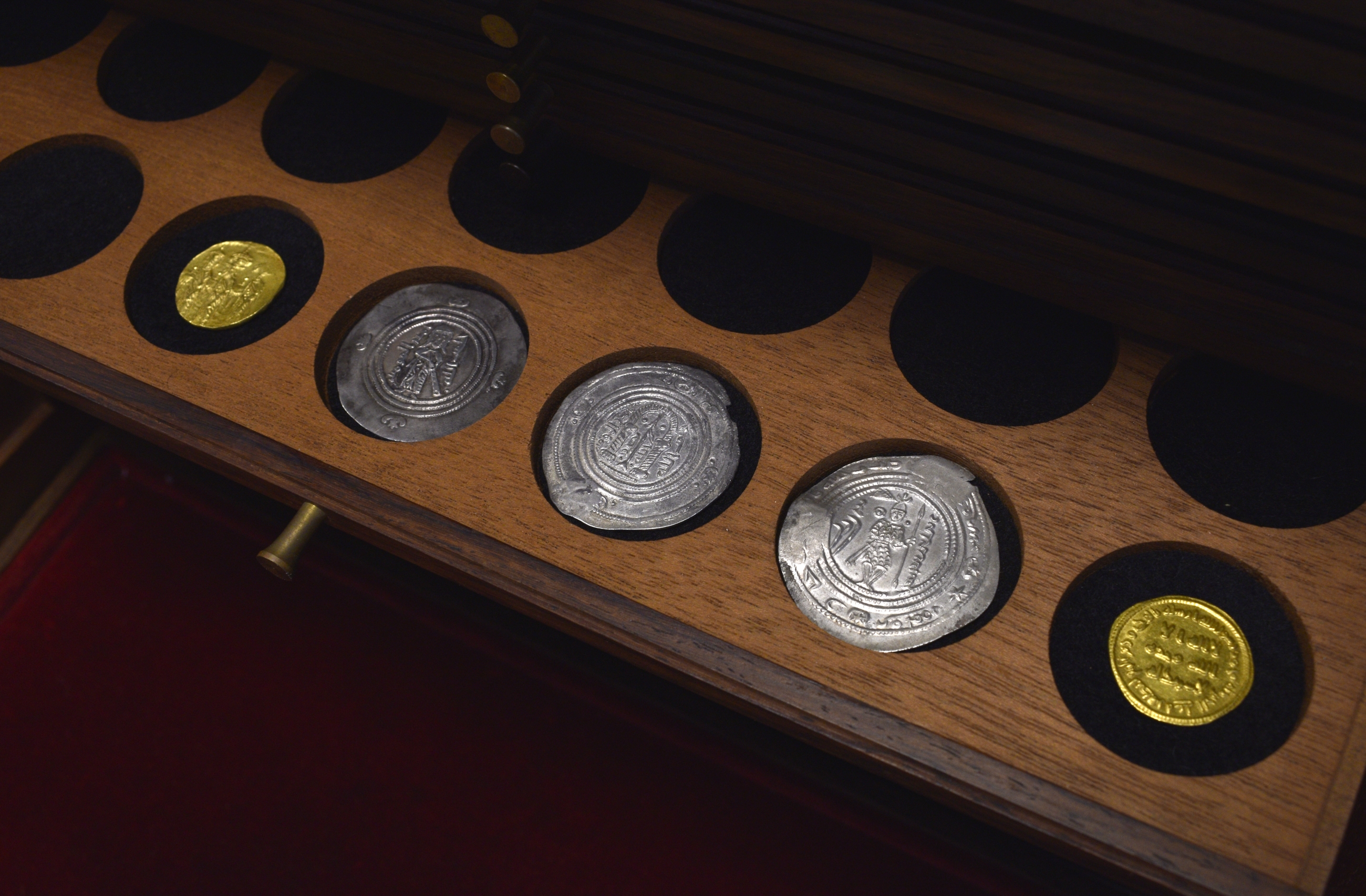
Surviving coins from the early Islamic periods are highly sought by both Arab and international collectors, with one recently purchased by a private European collector for £3.7m at an auction, in October 2019. “The remarkable record-breaking dinar represented the first Islamic gold coin to name a location in Saudi Arabia, and indeed the earliest dinar from the Gulf region as a whole," says Lloyd. "There are strong grounds for believing that the gold used in its manufacture came from a mine located between the holy cities of Makka and al-Madina: a mine owned not only by several caliphs but which had been given to another former owner by the Prophet Muhammad himself."
Other Islamic coin collections are on display at the British Museum in London, the Ashmolean Museum in Oxford, Dubai's Coin Museum and an Abu Dhabi exhibition, "Coins of Islam: History Revealed" inaugurated earlier this year. (Credit: Morton & Eden)
This article is available in French on Middle East Eye French edition.
Middle East Eye delivers independent and unrivalled coverage and analysis of the Middle East, North Africa and beyond. To learn more about republishing this content and the associated fees, please fill out this form. More about MEE can be found here.


